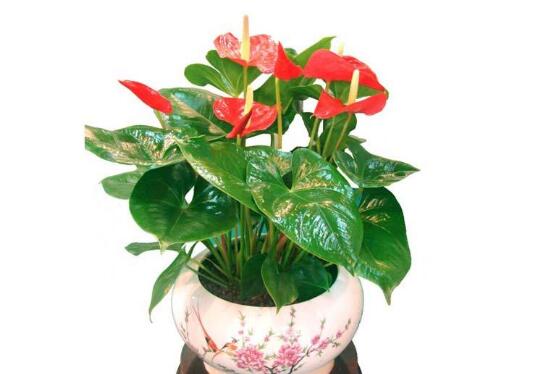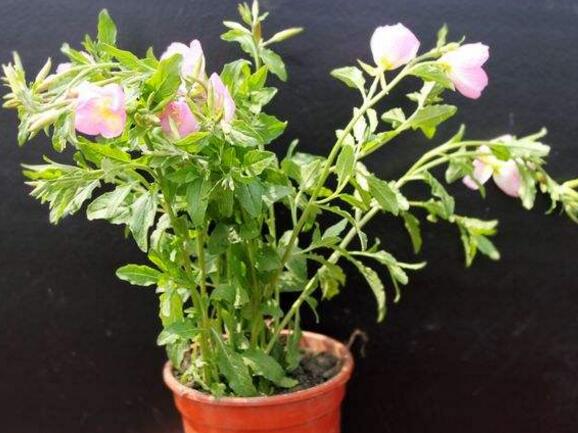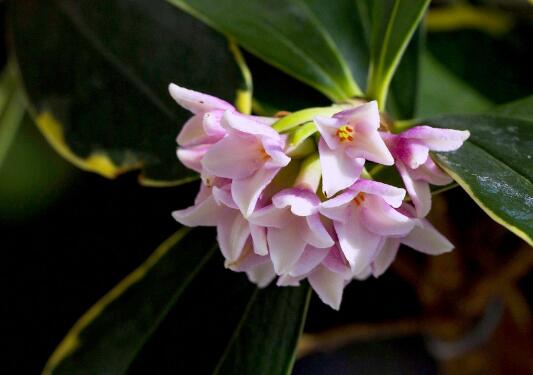How to raise the flaming crane flower, the breeding method and matters needing attention / avoid direct sunlight
Crane flower is a kind of plant native to tropical South America, which was introduced to China. Nowadays, it can be seen in many parts of our country, and there are many people who raise it in our country. However, if we want to raise it well, we need to pay attention to many places. About how to raise crane flowers? What are the breeding methods and matters needing attention of the flaming crane flower? Next, the editor will take you to learn about it.
First, how to raise flamingos and understand their habits

If we want to know how to raise flamingos, we must first understand its growth habits. This kind of plant likes high temperature and must be above 22 ℃ in order to grow well. In addition, watering, fertilization, light and other aspects also need to pay attention to when breeding, the specific breeding methods in the following, we continue to look at.
II. Culture methods and matters needing attention of Fire Crane Flower
1. Decaying leaf soil
When we cultivate flamingos, the choice of soil is very important. Only by growing on suitable soil can it grow better. Crane flowers prefer loose, fertile and well-drained rotten leaf soil, so that it can better absorb nutrients and is not easy to accumulate water in the process of growth.
two。 Flowerpot, peat pot or black plastic pot
Flamingos belong to fleshy roots, which are sensitive to light, so we should choose flowerpots with low light transmittance and many air holes at the bottom. Generally, peat pots, black plastic pots and so on are better. But it is best not to choose plastic pots with light night, and it is best not to choose glass flowerpots.
3. Temperature, 22 ℃-28 ℃
In the process of growing, it is important to let it grow at a comfortable ambient temperature. This kind of plant can grow well at a temperature of more than 22 ℃, but when the temperature exceeds 30 ℃, it is easy to cause leaf rot, so it is best for us to keep the temperature between 22 ℃ and 28 ℃.
4. Avoid stagnant water in dry and wet phases
Water is an indispensable nutrient in the process of plant growth, but the amount and frequency of watering are more fastidious for crane flowers. When we are watering, it is best to keep the basin soil dry and wet, do not cause stagnant water, otherwise it is easy to cause the root system to rot.
5. Fertilizing, applying thin fertilizer / once a month during the growing period
In the growth process, the demand for fertilizer is very high, especially after entering the growing period, basically once a month, so that it can have enough nutrients to thrive. However, when fertilizing, we should keep in mind that the fertilizer must be diluted before fertilization, otherwise it is easy to burn the plant, and the fertilizer is too thick for the plant to absorb.
6. Light, avoid direct sunlight
Crane flower is a kind of plant that avoids direct sunlight and prefers a cool environment, but there can be no lack of light in the process of breeding it, so we'd better put it in a place of sunlight scattering. When the summer light is too strong, we also need shade, it is best to move it to indoor semi-shade breeding, so as not to sunburn the plant.
7. Timely prevention and control of diseases and insect pests
In the process of breeding fire crane flowers, if we are not careful enough, it is easy to let diseases and insect pests enter. However, after the emergence of such problems, we should not panic, just prevent and cure them in time, and it is best not to procrastinate, because the longer the delay, the more difficult it is to prevent and cure. The specific treatment methods in the fire crane flower pest control article has a detailed introduction, you can understand.
How to raise the flaming crane flower? how to raise the fiery crane flower?
The crane flower, also known as Anthurium andraeanum or Candle, is a perennial herb of the genus Araceae. Anthurium andraeanum is difficult to cultivate and is native to the tropical rain forests of South America. Its characteristic is that it likes warmth and fear of cold, but also likes dampness and fear of drought, and likes dampness and taboo exposure. Today, the editor mainly brings you about how the flamingo flower is and the detailed breeding method of the flamingo flower.
[fire crane flower growth habits] like high-temperature plants and also like a humid environment, taboo of direct sunlight, requires fine cultivation. Only those above 22 degrees can grow well, and more than 30 degrees will easily cause leaf rot. The basin soil should also be kept dry and wet, and it is easy to rot roots if it is in a wet state for a long time. Therefore, we choose to cultivate in the fertile and loose culture soil as the best, and generally the mixture of rotten leaf soil as the best, and liquid fertilizer should be applied once a month in the growing season. The overwintering temperature should be above 10 degrees, and the watering of it should be well controlled.
[the culture method of fire crane flower] likes to be warm and moist, so it needs to be sprayed to the leaves every day. Maintaining humidity is beneficial to the growth of leaves. Poor drainage or basin soil is too wet and easy to rot roots, pay attention to keep sufficient water in the basin soil during the peak growth period. Watering should be dry and wet alternately, after one watering, wait for the surface of the basin soil to see dry and then water the next time. Water that likes to be sour can be watered with pH4~4.5 or irrigated with Rain Water, or 0.1%-0.5% ferrous sulfate can be applied regularly. In order to increase air humidity, you can often spray water to the leaves and around the basin, but do not spray water on the flowers. After autumn, as the weather turns cool, watering should be reduced gradually, and watering should be controlled from entering the room to leaving the room in early spring to keep the basin soil dry. The ideal relative humidity of cultivated red crane taro is 80%-85%, and the seedling transplanting should be controlled at 85%-90%.
Like a higher temperature, the suitable temperature for growth is 20 to 30 degrees, the overwintering temperature is not less than 10 degrees. Red crane taro is usually cultivated in protected areas (greenhouse, plastic greenhouse, shade shed). Generally speaking, the night temperature should be maintained at 19 ℃ and the daily temperature at 25 ℃ in winter, and 24 ℃ and 30 ℃ in summer. Under the shading net of greenhouse in summer, the temperature should not exceed 35 ℃. If the temperature is too high, ventilation should be strengthened. When the cold spell comes, when the temperature is below 15 ℃, measures should be taken to prevent the cold.
When potted, the loam rich in humus, loose and well drained is the best. 2 parts of rotten leaves should be used. Soil or peat soil, 1 part perlite or coarse sand to form culture soil, or rotten leaf soil (or peat soil 1 part, garden soil 1 part, moss) and charcoal 1 part plus a small amount of superphosphate or bone powder to form culture soil. It should be placed on wet gravel to increase humidity. The drainage of basin soil is better, avoid strong light, put it on the north windowsill in summer and the south windowsill in other seasons. The roots should be covered with moss. When going up or changing the basin, first fill the granular broken bricks and other things in the lower part of the basin, such as granular bricks, etc., as a drainage layer. The basin is changed once every 2 to 3 years, usually in combination with ramet propagation in early spring, and the old soil is removed and replaced with new culture soil.
The culture method of Araceae [scientific name] Anthurium scherzerianum [English name] Common Anthurium [alias] Araceae [family name]. [morphological characteristics] perennial evergreen herbs. Leaves leathery tufted, oblong-lanceolate, apex pointed, base rounded. Fleshy inflorescences orange-red, spirally curled, Buddha flame bracts broad-ovate, short-pointed, bright red. Flowering from February to July, if the temperature and humidity is suitable, it can blossom all the year round. [varieties] there are more than 200 species of the same genus, of which there are more than 20 species with ornamental value. Common: big leaf flower candle: Crystal flower candle: sword leaf flower candle.
[culture cultivation] Culture: ramet or cuttage culture, can also sow culture. Cultivation: like high-temperature plants, and like humid environment, avoid direct sunlight, require more fine cultivation. It takes more than 22 to grow well, and more than 30 is easy to cause leaf rot. The basin soil should be dry and wet alternately, and it is easy to rot the roots when it is in a strong state of water-dampness for a long time. Therefore, it is best to grow in fertile and loose culture soil. Generally speaking, the mixed culture soil such as rotten leaf soil, tree fern residue and broken charcoal is the best. Liquid fertilizer should be applied once a month during the growing season. The overwintering temperature should be above 10, and watering should be controlled. [pest control] the common diseases and pests are: the common diseases are: see the flower pest control section of "Flower Hospital" for specific control methods.
- Prev

How to sow evening primrose and the propagation method / sowing / cutting of evening primrose
Evening primrose is a kind of plant with high medicinal value, which has a good effect on many diseases, so many people want to keep one at home. How to sow Evening Primrose, and how many propagation methods are there? Next, the editor will take you to learn about it.
- Next

How to raise Phnom Penh Daphne, the breeding methods and precautions of Phnom Penh Daphne / avoid strong light
Phnom Penh Daphne is a traditional famous flower in China, and it is also very well-known in the world, and it can be seen in many parts of the world. However, it is not easy to raise it well, and there are a lot of things to pay attention to. About how to raise Daphne odora in Phnom Penh? What are the culture methods and matters needing attention of Daphne odorifera in Phnom Penh
Related
- Fuxing push coffee new agricultural production and marketing class: lack of small-scale processing plants
- Jujube rice field leisure farm deep ploughing Yilan for five years to create a space for organic food and play
- Nongyu Farm-A trial of organic papaya for brave women with advanced technology
- Four points for attention in the prevention and control of diseases and insect pests of edible fungi
- How to add nutrient solution to Edible Fungi
- Is there any good way to control edible fungus mites?
- Open Inoculation Technology of Edible Fungi
- Is there any clever way to use fertilizer for edible fungus in winter?
- What agents are used to kill the pathogens of edible fungi in the mushroom shed?
- Rapid drying of Edible Fungi

